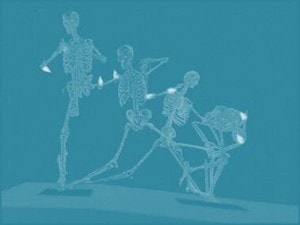The Hip Bone’s Connected to the Shoulder Bone…
Our approach has always been whole body. As a result, we frequently see patients who are misdiagnosed as having one problem when they really have another cause. An example is a patient with knee pain who has an MRI that shows some arthritis, but his knee pain is really coming from the tendons that attach at the knee which was ultimately caused by problems in his low back. This week a paper was published that continues support our Orthopedic 2.0 approach (read our practice’s e-book to see how we look at using stem cells in the context of figuring out why you hurt). This paper looked at baseball pitchers with baseball shoulder injury problems. While it wasn’t surprising that pitchers with more shoulder issues had less range of motion of the shoulder, what was surprising was that they also had problems with hip extension! This makes sense, as to get maximum speed on the ball you need more than your shoulder. If you’ve ever heard a coach say, “Put your body into it…”, you know what I mean. In fact, during wind up for a pitch, a baseball pitcher stores energy in his hip and spine, so not having enough hip extension means that you can’t store and release energy in the hip. Without being able to tap the rest of his body, a pitcher will overwork his shoulder to try and get the same speed on the ball. Again, our orthopedic care system is focused on the MRI and then the surgery to fix a broken part (a tear in the rotator cuff or shoulder labrum), but this is wholly inadequate to answer the next obvious question, “How did it get broken?”

If you have questions or comments about this blog post, please email us at [email protected]
NOTE: This blog post provides general information to help the reader better understand regenerative medicine, musculoskeletal health, and related subjects. All content provided in this blog, website, or any linked materials, including text, graphics, images, patient profiles, outcomes, and information, are not intended and should not be considered or used as a substitute for medical advice, diagnosis, or treatment. Please always consult with a professional and certified healthcare provider to discuss if a treatment is right for you.
